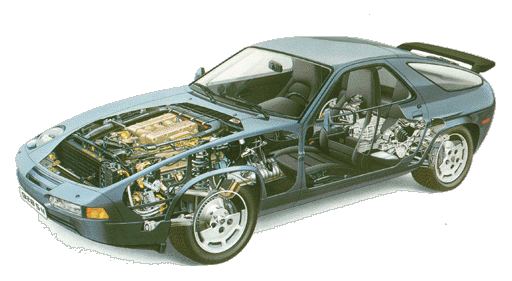Porsche 928 S4 – Owner’s Manual |
|
|
Model Year 1987 From
the “Porsche 928 S4 Owner’s Manual”, available from 928 Specialists. |
Judging
by the car you have chosen, you are a motorist of a special breed, and you
are probably no novice when it comes to automobiles . . . .
In accordance with Federal Safety Regulations, the vehicle identification number of your car is located on the left* windshield post and can be seen from the outside. Engine
number The
engine number is stamped on the front reinforcing rib in the top half of the
crankcase. Paint
number The
paint number sticker is on the doorjamb on the driver’s side. *Throughout
this booklet and other Porsche publications applicable to USA vehicles, left
is designated as the driver’s side of the vehicle, and right as the
passenger’s side of the vehicle. Safety Compliance Sticker The
Safety Compliance Sticker is your assurance that your Porsche complies with
all Federal Motor Vehicle Safety Standards which were in effect at the time
the vehicle was manufactured. It
is located on the doorsill on the driver’s side. This
sticker also shows the month and year of production and the vehicle
identification number of your car (perforations) as well as the Gross Vehicle
Weight Rating and the Gross Axle Weight Rating. Vehicle Identification Label The
vehicle identification label is located underneath the luggage compartment
floor cover, next to the spare wheel well. This
label contains the following information:
A
duplicate of this label is in your Warranty and Maintenance booklet. Dear Porsche-Owner
A
lot has gone in the manufacture of your Porsche, including advanced
engineering, techniques, rigid quality control and demanding
inspections. These engineering
and safety features will be enhanced by you… the
safe driver… who
knows his car and all controls, who
maintains his vehicle properly, who
uses his driving skills wisely, and always drives within his own capabilities
and his level of familiarity with his vehicle. First things first
Emergency equipment It
is good practice to carry emergency equipment in your vehicle. Some of the things you should have
are: window scraper, snow brush, container or bag of sand or salt, emergency
light, small shovel, first-aid kit, etc. In
the drivers seat . . .
On
the road . . .
|
|
|
|
